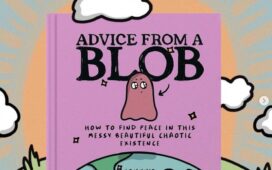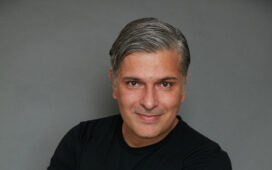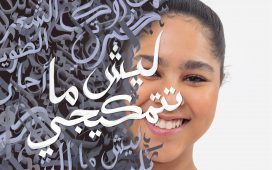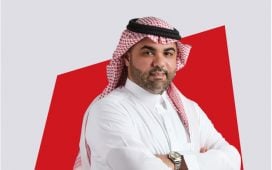The perception of beauty is like looking into a kaleidoscope – it is reflected in the sum of many parts.
With the region’s rich history in cross-cultural integration, the Arabic look encompasses a broad spectrum of skin tones and diverse heritage.
But in the advertising world, casting the right models to embody the essence of Arab beauty while representing the masses, can be a tricky one.
Some say it stems from having a limited number of Arab models to choose from in the talent pool.
But does the responsibility lie with advertising agencies, production companies and magazines, all of which have been accused of misrepresenting Arab beauty, or is it part of a much wider issue? You’d be forgiven for thinking that to be an Arab woman was to be extremely pale with European features, with often only the palest models making the grade, both in advertising campaigns and magazine fashion shoots.
It is widely known that most brands take an axiomatic approach in featuring aesthetically pleasing faces to their beauty campaigns, rather than taking risks to help widen the perception of what is deemed beautiful. While Dove is considered an exception to the rule, with its ‘Real Beauty Sketches’ campaign featuring women of all backgrounds, shapes and sizes, why does this broader concept of beauty fail to resonate in the Arab world?
Evan Kearney, strategic planning director at Memac Ogilvy & Mather, says: “Beauty in the Arab world is still a very superficial topic. Whereas the West is adopting a more holistic approach to beauty, concentrating on elements like confidence and self-assurance and their importance to overall inner beauty, here it’s still judged solely on outward appearances. We see brands like Dove championing the ideal of real beauty, continuing on from their global positioning and trying to remove the standard of beauty from unrealistic and unobtainable images portrayed by the media, but they seem to be alone in that regard.
“Everyone else seems happy to further the established stereotypes. As a result, and despite the fact that most women have to cover up in public, the
demand for plastic surgery shows considerable growth, and has done for years. And it’s consequently become increasingly more accessible, affordable and accepted. These ideals are what consumers here relate to and it’s just easier for brands to ride that wave.
“And the superficial nature of beauty doesn’t end there. There is a growing trend for ‘slim’ to be the new evaluation of health – women are even basing such life essentials on these superficial measures, which just fuels the demand for cosmetic procedures like liposuction and plastic surgery.”
Not surprising then, that beauty ideals portrayed in the media are often considered the inspiration for women in the Arab world, and that good looks are high on the agenda as an important source of pride. So, what is the cultural motivation for maintaining physical beauty standards for Arab women?
Evan adds: “The desire to keep one’s husband interested when he’s allowed to marry more than once and divorce is so easy, the inability to attract a man’s interest through anything other than outward (and very limited) appearance when you’re not allowed to talk to them, the lack of other self-fulfillment channels open to women (like education or a career), the example set by the older generation – all of this only serves to fuel this perception.
“Is it only a matter of time before their perception of beauty evolves too? Will self-confidence start to be seen as an attractive quality, on par with slimness and hair? Hard to tell, but it also raises the other, important philosophical question – should advertising reflect society, or shape it? As many advertising professionals in the region are from the West, should we be imparting our ideals on this region, or should we be playing back the current perceptions of beauty even though it can be a source of stress to many? And this can be a real challenge.
“If the current perception of beauty is a problem to many, we need to find ways to address it. If attaining that standard is a problem, we need to find solutions to it. But we should always be looking to address the issues, not add to them.”
If beauty is commonly perceived as predominantly physical, what are brands doing to ensure their insecurities and desire to be attractive are not being fuelled by ad campaigns?
Madhusudhan Rao, marketing vice president for Unilever MENA, says: “Globally there are nine out of 10 women who are likely to say they are not beautiful. In this part of the world, when we’re talking about Arab women, it’s clear they believe that taking care of themselves and keeping up with their looks by continuing to look attractive is important to them. The lack of self-esteem when it comes to women is a global problem. I see it as an opportunity and responsibility of brands to restore their low self-esteem.
“Dove is at the forefront of bringing back self-esteem making it not just about looks but also personality. Brands must have a point of view when it comes to beauty and they don’t always do that.
“If we look at beauty in the Arab market it is very sophisticated – brands must appeal to that. Consumers are looking for products that fulfill their wants and desires to help reinforce their character and personality. There needs to be a holistic approach in how brands approach beauty.”
Alex Malouf, corporate communications manager, at Procter & Gamble (P&G), Arabian Peninsula, adds: “We have always believed that true beauty stems from within. We have never alluded to beauty as a superficial, frivolous concept or a purely physical manifestation. For us, beauty is synonymous with health and wellbeing; essentially, it is a projection of a woman’s inner radiance. We want our customers in the region to feel good about themselves on the inside, so that it can be reflected on the outside. It is not strictly about appearance. There is definitely a profound emphasis on beauty in Arab culture and this derives from the region’s longstanding heritage and traditions.
“There is no denying that make-up is an incredibly important and creative tool for women in this region – it serves as an important mode of self-expression and allows them to forge a personal style.
“Beauty is already extremely subjective; it is absolutely in the eye of the beholder. There are myriad beauty trends that reign supreme in this region – such as thick eyebrows, dark eyes or long hair – that probably don’t work elsewhere in the world.
“In reality, every single culture today mandates specific standards of beauty. There is no universal ideal; it is a question of ever-evolving taste, shifting times and changing cultural values.
“Physical beauty should never be clearly defined. We prefer to focus on the importance of genuine, inner beauty and how that can cause a ripple effect that seeps into every area of a woman’s life. We want to empower women with the knowledge that true beauty comes from within; and, in doing so, we aim to provide them with the right tools to enhance their self-esteem and build their self-confidence.”
In the GCC in particular, the perception of beauty can be skewed even more by the added problem of modelling being deemed an unsuitable profession, which leads to predominantly European models playing the role of Arab women.
One such model is Romanian Andreea Zoia, who has been cast in ad campaigns for Emirates, Emirates NBD, Emaar and Coca-Cola. She believes that the limited number of Arab models can also struggle to tell a convincing story in ad campaigns. “After so many years in the industry, I’ve been on site with many people and have noticed many nationalities, but also Arab models – some of them have a certain ego about being photographed because they have not been in an environment where they have been briefed or taught about delivering a service to make a car or drink look good,” she says. “It doesn’t make for a convincing story.
“When I came here I was modeling a lot and there was a big demand for Arab models and I felt I had the look because I’m a Mediterranean woman and have similar features to Arab women. I wondered how I would feel in an abaya and so I bought one and wore it for a photo shoot.
“I saw it as an opportunity and felt very good about myself wearing it. Designers started to book me for fashion shows.”
The Arab world has never been a popular place to search for models for regional and global campaigns, due to conservative factors, but will it change and enhance the way beauty is perceived in the future? Zoia says: “If model scouts are in the mall and offer their business card to an Arab woman, they will not take it. Unfortunately, there are too many advertising agencies and clients that don’t have a wide choice over who they book.
“Sometimes they select Arab models who don’t do justice to what they are marketing. They are still young and still have a lot to learn about the industry.
“I think that there is a sensitive culture and that’s the reason why parents of young women want them to spend their time earning their living differently. Arabs are generally more conservative and private, which is understandable and to be respected.
“People need to be patient and allow the industry to grow. In terms of development, we are there economically but the technicalities and attention to detail have to be present in order to learn further, but rest assured the industry will.”









